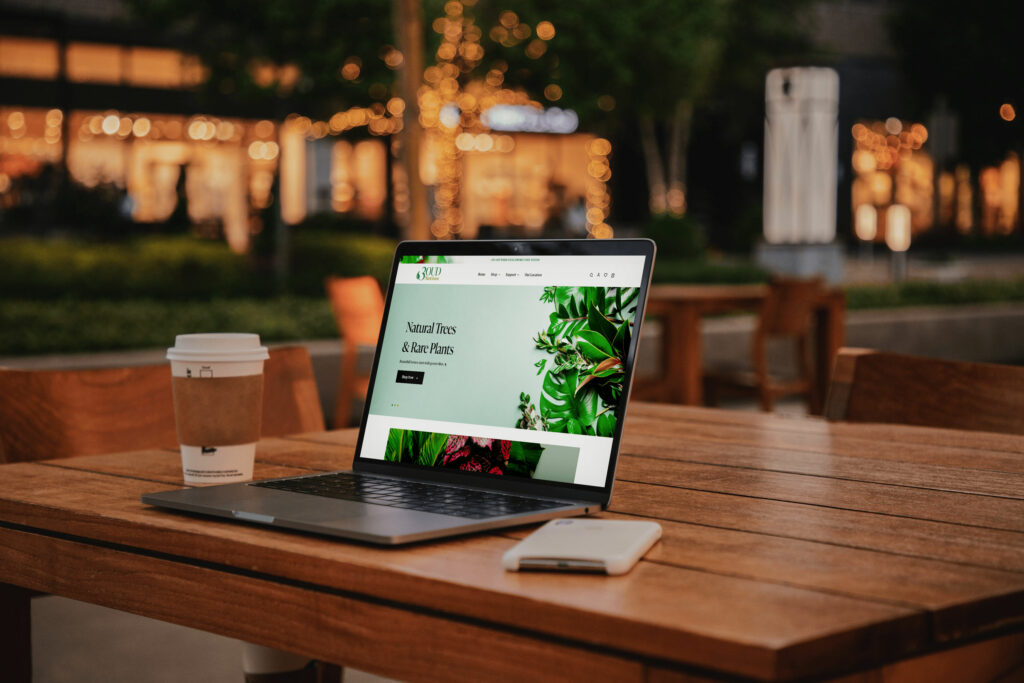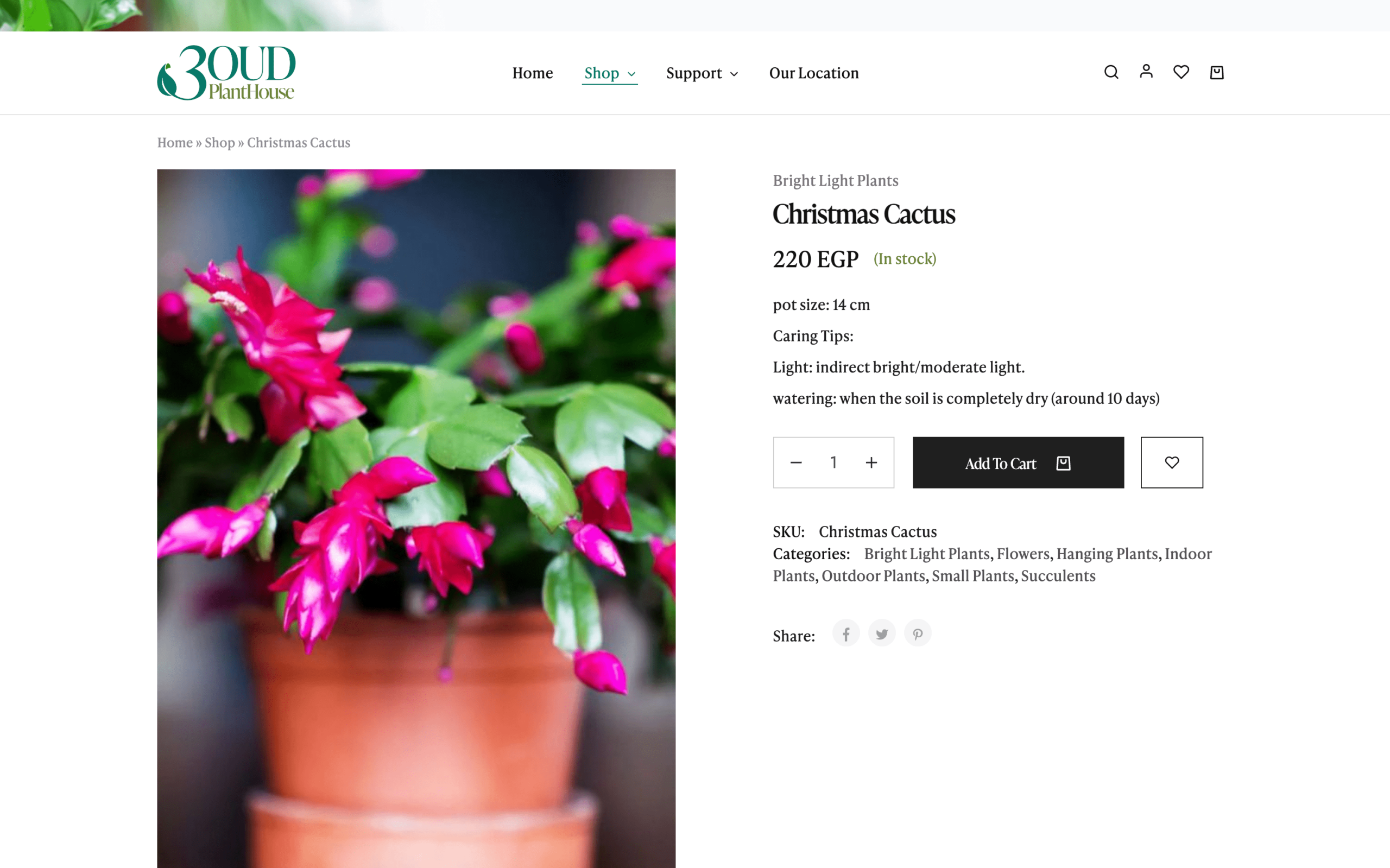
This case study explores the process of designing, developing, and deploying an e-commerce website for 3oud Planthouse, an established Planthouse in Cairo, Egypt. The primary challenge was providing a seamless user experience while maintaining an appealing visual design aligned with the client’s brand. The website was built using modern technologies and deployed on AWS, hosted on a secure EC2 instance.

Introduction:
The client, a plant house owner, desired an online platform to sell their plant collection. They wanted a user-friendly e-commerce website that showcased their products and provided a smooth shopping experience. Additionally, the client required the website to reflect their brand identity through visually appealing design elements. To meet these requirements, a comprehensive design and development strategy was formulated.
Design Phase:
User Experience (UX) Design:
- Conducted market research to understand user preferences in the plant ecommerce domain.
- Created user personas to identify target audiences and their expectations.
- Developed a site map and user flow to ensure logical navigation.
- Designed wireframes and interactive prototypes to visualize the website’s structure and functionalities.
- Conducted usability testing to gather feedback and make iterative improvements.
Visual Design:
- Collaborated with the client to understand their brand guidelines and aesthetic preferences.
- Created a mood board and style guide to establish the visual identity of the website.
- Designed a visually appealing interface, including a logo, color scheme, typography, and imagery.
- Ensured the design elements were consistent across the website and reflected the client’s brand.
Development Phase:
Technology Stack:
- Chose appropriate technologies for e-commerce development, including a frontend framework (e.g., React or Angular), a backend framework (e.g., Node.js), and a database system (e.g., MongoDB or PostgreSQL).
- Integrated third-party payment gateways and implemented secure payment processing.
- Implemented features such as product listing, search functionality, shopping cart, user authentication, and order management.
Responsive Web Design:
- Developed a responsive website that adapted to various screen sizes and devices.
- Ensured optimal performance by optimizing code, compressing images, and caching resources.
- Implemented accessibility features to ensure the website could be used by all users.
Deployment and Hosting on AWS:
AWS Account Setup:
- Created an AWS account and configured necessary security measures (e.g., Multi-Factor Authentication).
- Established appropriate IAM (Identity and Access Management) roles and policies for secure access control.
EC2 Instance Setup:
- Provisioned an EC2 instance with appropriate computing resources, taking into consideration anticipated website traffic.
- Installed and configured the required web server software (e.g., Nginx, Apache) and database system.
- Secured the instance by configuring firewalls and setting up SSL/TLS certificates for encrypted communication.
Domain Name and DNS Configuration:
- Registered a domain name with a registrar of choice.
- Configured DNS settings to point the domain to the EC2 instance’s IP address.
Website Deployment:
- Utilized version control (e.g., Git) to manage the website’s source code.
- Set up a CI/CD pipeline to automate the deployment process.
- Deployed the website to the EC2 instance using deployment tools such as AWS CodeDeploy or containerization technologies like Docker.
Security Measures:
SSL/TLS Encryption:
- Implemented SSL/TLS certificates to encrypt data transmission between the website and users.
- Configured HTTPS protocol for secure browsing.
Web Application Firewall (WAF):
- Implemented AWS WAF to protect against common web attacks and filter malicious traffic.
Regular Updates and Patch Management:
- Ensured the underlying operating system, web server software, and other dependencies were regularly updated with the latest security patches.
Conclusion:
The successful implementation of the planthouse e-commerce website involved careful consideration of user experience, visual design, and secure deployment. By utilizing AWS services, including an EC2 instance, the website was hosted securely and efficiently. The website achieved the client’s objectives by providing a seamless shopping experience while maintaining a visually appealing design that aligned with their brand identity.


